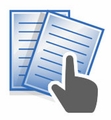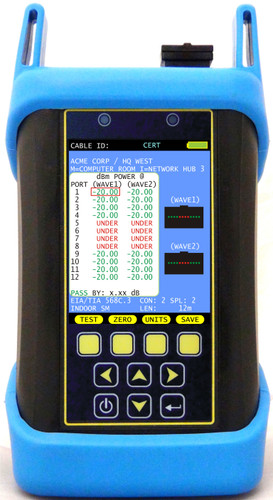 Here you will find a comprehensive list of Fiber Optic Cable Guides, References and Information. If you are new to fiber optics, or just need assistance selecting an item with the correct specifications for your application, Cables Plus offers this growing knowledge base for your convenience to aid in finding what you are looking for.
Here you will find a comprehensive list of Fiber Optic Cable Guides, References and Information. If you are new to fiber optics, or just need assistance selecting an item with the correct specifications for your application, Cables Plus offers this growing knowledge base for your convenience to aid in finding what you are looking for.
The information below will help you better understand the difference in fiber connector and glass types, and how they affect speed, accuracy and connectivity quality. These guides can also assist in the installation process, giving you the guidance you need to know how and where to install, depending on the type of cable you need. If you need further assistance, you can contact Cables Plus USA for more.
| MTP® Brand MPO Polarity Methods vs. Cable Types Understand multi-fiber connector basics & terminology and differentiate between polarity “Types” & “Methods” of MTP cable polarity. |
Here you will find descriptions and illustrations of the available options for custom MTP/MPO cables. |
|
 Fiber Optic Cable Construction Fiber Optic Cable ConstructionGet a better understanding about the different components involved in fiber optic cable construction. |
 Fiber Optic Glossary of Terms Fiber Optic Glossary of TermsThe fiber optic glossary of terms is a full, comprehensive list of words and acronyms associated with fiber optics. |
|
 Fiber Optic Connector Polishing Fiber Optic Connector PolishingThis fiber optic connector polish information guide will help you understand the different types of polishes, and how they affect reflection loss. |
 About Fiber Optic Cable About Fiber Optic CableThis review covers every aspect of the history and evolution of fiber optics from the beginning, up to the present day. |
|
 Fiber Optic Cable Characteristics Fiber Optic Cable CharacteristicsLearn in-depth information about the history, structure, applications and advantages associated with fiber optic cable. |
 Fiber Optic Cable Glass Types Fiber Optic Cable Glass TypesThis guide will assist in distinguishing different fiber optic cable glass types, between singlemode and the various multimode glass types. |
|
The RoHS Directive restricting the use of certain substances in the manufacturer of electronics. |
||
 Polyethylene Pipe Handbook Polyethylene Pipe HandbookLearn how PE piping, has been successfully utilized for a variety of piping applications for over 50 years. |
 Fiber Selection Guide Fiber Selection GuideA Peel-n-Place Fiber Optic Selection Guide comes with every order from Cables Plus USA. |
|
 GBIC Basics GBIC BasicsUse this guide to learn the basics of GBIC, routers, switches, and connection types. |
This guide contains typical aerial connection methods for running fiber optic cable. |
|
 Plenum vs. Non Plenum Fiber Optic Cable Ratings Plenum vs. Non Plenum Fiber Optic Cable RatingsPlenum, Riser, Low Smoke Zero Halogen and General Purpose cable ratings. |
 OM3 vs OM4 Fiber Optic Cable OM3 vs OM4 Fiber Optic CableUse this guide for a better understanding of OM3 and OM4 fiber optics before you buy. |
|
 NEC Cable Fire Ratings Guide NEC Cable Fire Ratings GuideLearn about fire ratings to ensure you are purchasing the proper cable type for your application. |
The information listed here is to assist Network Administrators in the color coding of Ethernet cables. |
|
 Fiber Optic Cable Guide Fiber Optic Cable GuideA guide to all standard and MTP fiber optics, including glass types, connector styles and cable specs. |
Learn about easy fiber optic installation with the MTP plug-and-play solution here. Save time and energy. |
|
A quick guide featuring information about fiber channel cable assembly information, testing methods and options. |
This guide reviews the methods, tools and procedures employed to identify unknown threads. |








